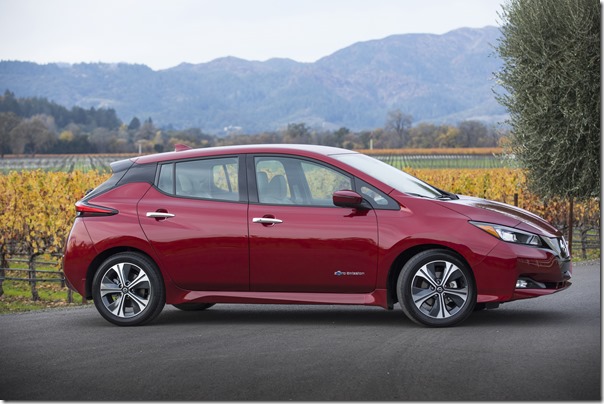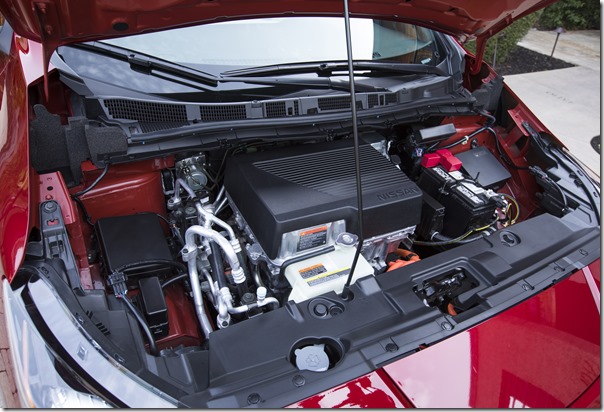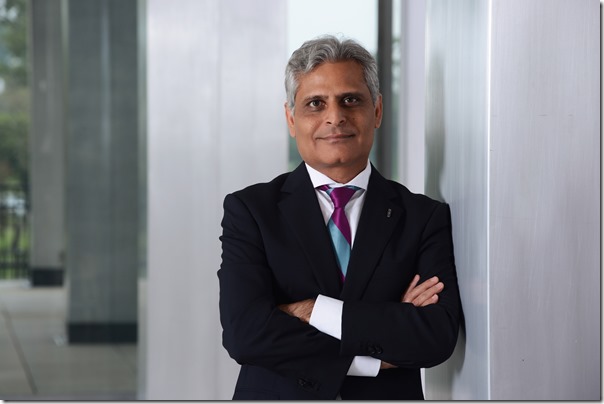Nissan LEAF & the Economics of Automotive
Nissan’s Chris Reed has a title as long as an NBA player’s arm: Vice President, Components Engineering, Nissan Technical Center North America, Nissan North America, Inc.
#economics #hybrid #electronics
Nissan’s Chris Reed has a title as long as an NBA player’s arm: Vice President, Components Engineering, Nissan Technical Center North America, Nissan North America, Inc. Oh, and let’s not leave out the other part: Overseas Chief Vehicle Engineer (OCVE) D-Platform Crossovers.
All of which means that he has a wide area of responsibility, and he knows a lot about Nissan vehicles.
The last time my “Autoline After Hours” colleague John McElroy and I sat down and talked with Reed was three years ago, when we learned all about the then-brand-new, third-generation Nissan Murano.
This time McElroy and I, joined by Doron Levin of “In the Driver’s Seat” on SiriusXM 121, talk with Reed about the all-new, second-generation Nissan LEAF.

The original LEAF was launched as a 2010 model. Reed explains how for the 2018 model they decided to change things up. For one thing, the goal was to make it more mainstream by providing an exterior design that is more in keeping with the other vehicles in the Nissan showroom, not something that looks like it has arrived from the future.
Another thing they did was to provide the vehicle with more horsepower and torque, 147 hp and 236 lb-ft, respectively, which are increases of 37 percent and 26 percent, respectively, over the outgoing LEAF.

In addition to which, they reengineered the lithium-ion battery pack so that it takes up the same amount of space as the previous one, but whereas that one provides an estimated range of 107 miles, the new one ups that to 150 miles. Reed says that the notion of “range anxiety” should be quelled by 40 kWh battery pack in the 2018 LEAF.
They’ve done a number of other things under the rubric of “Nissan Intelligent Mobility” for the LEAF. For example, there is what they call “Intelligent Power,” which goes to the point of the increased range of the vehicle, and there’s “Intelligent Integration,” which goes to things like a smartphone app that provides the LEAF owner with information about the car and things like the nearest charging stations.
And there is “Intelligent Driving,” which encompasses not only the ProPILOT Assist system, which is automatic lane-keeping and braking functionality, but “e-Pedal,” which is the means by which the driver, by using the accelerator pedal alone (yes, there is a brake pedal, too), can control the speed of the vehicle, including deceleration at a rate of up to 0.2 g. Nissan estimates that the e-Pedal can handle more than 90 percent of daily driving velocity conditions.
Reed provides insights into what they worked to accomplish with the new LEAF, a vehicle that, since its launch in December 2010, has had global sales of more than 300,000 units, making it the world’s best-selling electric vehicle.

Ford’s Galhorta
In addition to which, McElroy, Levin and I discuss a variety of other subjects, including the management changes at Ford North America (e.g, Kumar Galhorta, getting the top job), the changes that are occurring in the supplier space (e.g., Bosch acquiring SPLT), the economics of the auto industry (e.g., GM taking a hard look at its operations, as in Korea), and a whole lot more, all of which you can see right here.
RELATED CONTENT
-
On Military Trucks, Euro Car Sales, Mazda Drops and More
Did you know Mack is making military dump trucks from commercial vehicles or that Ford tied with Daimler in Euro vehicle sales or the Mazda6 is soon to be a thing of the past or Alexa can be more readily integrated or about Honda’s new EV strategy? All that and more are found here.
-
On Automotive: An All Electric Edition
A look at electric vehicle-related developments, from new products to recycling old batteries.
-
On Ford Maverick, Toyota Tundra Hybrid, and GM's Factory Footprint
GM is transforming its approach to the auto market—and its factories. Ford builds a small truck for the urban market. Toyota builds a full-size pickup and uses a hybrid instead of a diesel. And Faurecia thinks that hydrogen is where the industry is going.


.jpg;width=70;height=70;mode=crop)






